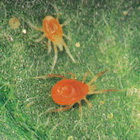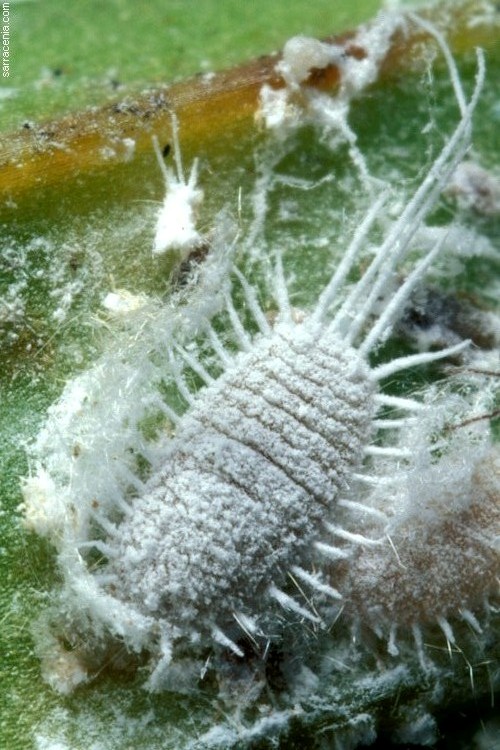Pests
Shoot and fruit borer (Leucinodes orbonalis)
Shoot and fruit borer causes serious damage to the crop leading to severe reduction in yield. Short pinkish larva of the pest initially bores into the terminal shoots resulting in withering and drying up of the shoot. In the later stage, it bores into the young fruits by making holes and feeding from within thereby making the fruits unfit for consumption. Attacked fruits rot in severe case.
Control: Continuous cropping of brinjal on the same field should be avoided. As soon as the pest attack is noted, remove and destroy the affected parts along with the insect. Fruits showing any boring symptom should also be picked and destroyed. Spay Emamectin benzoate 5% SG @ 10 g ai/ha or Chloran tranilipole 18.5 SC @ 30 g ai/ha at an interval of 15 days to control fruit and shoot borer under large scale cultivation.
Leaf eating beetle (Epilachna vigintioctopunctata)
The yellowish coloured grubs and adults of the beetle feed voraciously on leaves and tender plant parts, and the leaves are completely skeletonized leaving only a network of veins. When in large number, the pest causes serious defoliation and reduces yield.
Control: Collection and destruction of infested leaves along with the grubs, adults and eggs reduces damage to the crop. Spraying malathion (2 ml/litre of water) or carbaryl (2-4 g/litre of water) effectively controls the pest.
Jassids (Amrasca biguttula biguttula, Cestius phycitis)
Both nymph and adult stages of jassids suck sap from the lower surface of the leaves. The infested leaves curl upward along the margin, which may later turn yellowish, and show burnt up patches. Fruit set is adversely affected by the infestation. Jassids are the vectors of mycoplasmal and viral diseases like little leaf and mosaic.
Control: Spray Thiamethoxam 25 WG @ 50 g ai/ha or Diafenthiuron 50 WP @ 300 ai/ha or Spiromesifen 22.9 SC @ 96 g ai /ha.
Leaf roller (Eublemma olivacea)
Caterpillars of the leaf roller pest roll the leaves and feed on green matter while remaining inside the folds. The folded leaves wither and dry up.
Control: Collection and destruction of the infested leaves along with the insects in the initial stage itself help to minimize damage to the crop. Spraying carbaryl (0.1%) or malathion (0.05%) controls the pest effectively.
Red spider mite (Tetranychus neocaledonicus, T. cinnabarinus, Paratetranychus indicus)
Nymphs and adults of the mites suck cell sap and white patches appear on leaves. Affected leaves become mottled, turn brown and fall. Different stages of mites are found in colonies covered by white silky webs on lower surface of leaves. High temperature and low relative humidity are conducive for multiplication of mites
Control: Acaricides like dicofol (0.05%) and wettable sulphur (0.3%) gives effective control of mites. At high temperatures, it may be necessary to apply these at an interval of two days. However, during egg stage and the resting stages, most acaricides are ineffective. Collection and burning of severely infested plant parts reduces further multiplication of mites. Proper irrigation and clean cultivation are essential to keep the pest population under control.

Mealy bug (Centrocccus insolitus)
Nymphs and adults of mealy bugs suck sap from the leaves, tender shoots, and the fruits. Leaves show characteristic curling symptoms similar to that of a virus attack. Heavy black sooty mould may develop on the honeydew like droplets secreted by mealy bugs. If the flower blooms are attacked, the fruit set is affected. When the fruits are infested, it may lead to fruit drop or the fruits remain on the shoots in a dried and shriveled condition.
Control: Spraying insecticides like dichlorvos (0.02%) or chlorpyriphos (0.05%) with fish oil rosin soap control the insect population. Unlike the adults, the crawlers are free from waxy coating and therefore the crawler stage is the most effective stage for spraying pesticides.

Root knot nematodes (Meloidogyne incognita and M. javanica)
The root knot nematode damage is more harmful to seedlings than to older plants. The affected plants show the development of galls on the roots. The plants become stunted and the leaves show chlorotic symptoms. Fruit set is adversely affected.
Control: Crop rotation with root knot nematode resistant crops like marigold, etc. help in the reduction of nematode population. Nursery treatment with Bacillus macerans or Paecilliomyces lilacinus @ 25 g/m2 and mainfield treatment with P. lilacinus @ 5 g/m2 can be recommended.

